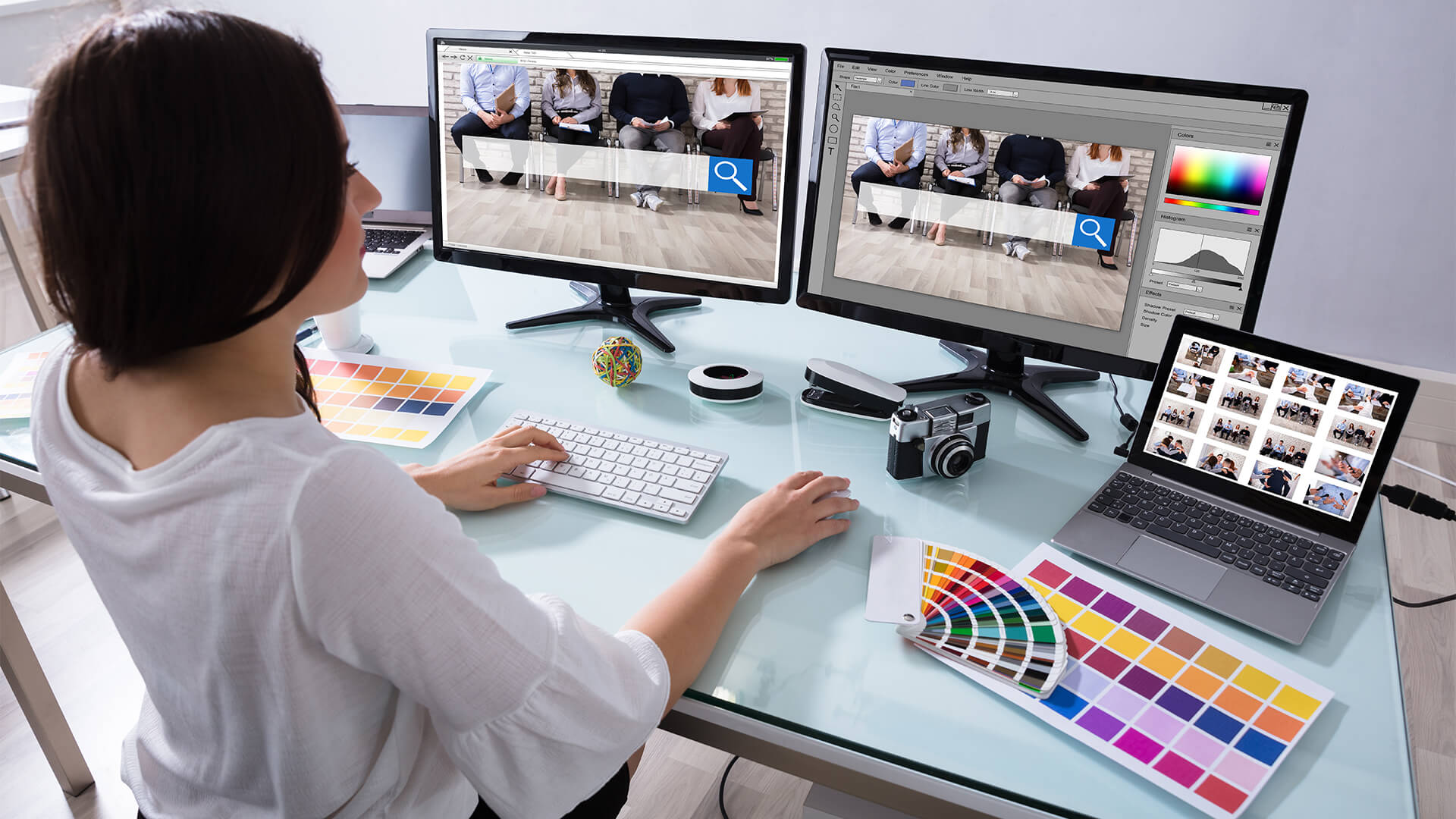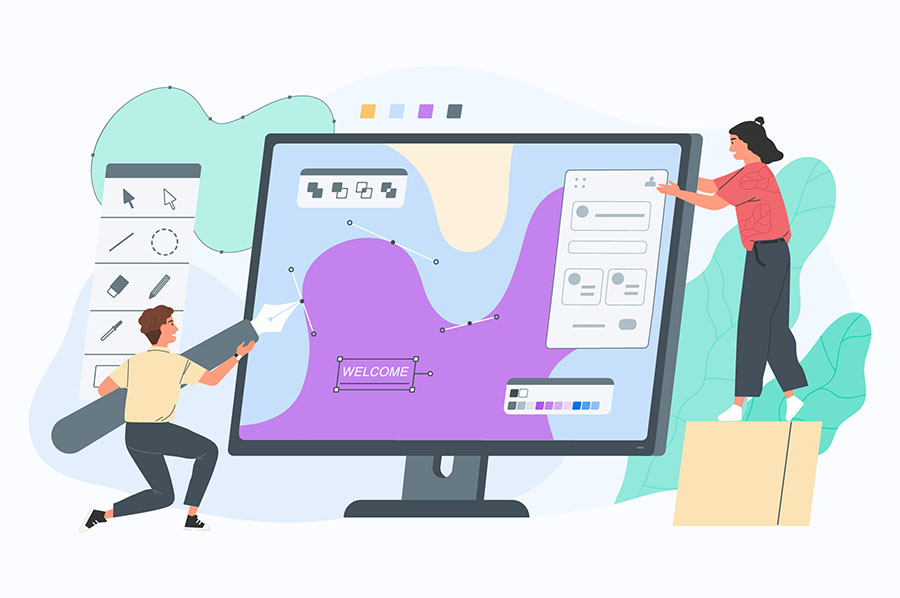All Categories
Featured
Table of Contents
- – Powderkeg: Web Design Madison, Wi Tips and Tri...
- – Arch Web Design: Top-rated Web Design Agency ...
- – What Does A Web Designer Do? - Careerexplorer...
- – Web Design Courses & Tutorials - Codecademy T...
- – Web Design Certificate - Web Development Cert...
- – Mrw Web Design - Wordpress Websites For Nonpr...
- – Web Design Blog - Webdesigner Depot Webdesig...
- – Web Design - Entrepreneur Tips and Tricks:
- – Web Design - Linkedin Learning, Formerly Lyn...
- – Why Web Design Is Dead - - Ux Magazine Tips ...
- – What Is Web Design, How To Do It Right And B...
Powderkeg: Web Design Madison, Wi Tips and Tricks:
Quick summary Functionality and the utility, not the visual style, determine the success or failure of a site. Considering that the visitor of the page is the only person who clicks the mouse and therefore decides whatever, user-centric design has actually established as a standard method for successful and profit-oriented web style - web design frederick md.
and the utility, not the visual style, figure out the success or failure of a website. Considering that the visitor of the page is the only individual who clicks the mouse and therefore decides whatever, user-centric style has become a basic approach for successful and profit-oriented web style. If users can't use a function, it may as well not exist.
g. where the search box must be placed) as it has already been performed in a number of short articles; instead we concentrate on the techniques which, utilized appropriately, can result in more sophisticated design choices and simplify the process of viewing provided information. Please notice that you might be interested in the usability-related articles we've published prior to: Concepts Of Excellent Site Style And Reliable Web Style Standards, In order to use the concepts effectively we initially require to understand how users connect with websites, how they think and what are the fundamental patterns of users' habits.
Arch Web Design: Top-rated Web Design Agency For Saas ... Tips and Tricks:
Visitors look at each new page, scan some of the text, and click the first link that captures their interest or slightly looks like the thing they're looking for. In truth, there are big parts of the page they don't even take a look at. The majority of users search for something intriguing (or useful) and clickable; as quickly as some promising candidates are found, users click.
If a page offers users with top quality content, they want to compromise the material with ads and the design of the site. This is the factor why not-that-well-designed websites with top quality content get a great deal of traffic over years. Material is more vital than the style which supports it.

Extremely easy principle: If a site isn't able to meet users' expectations, then designer failed to get his task done correctly and the business loses money. The greater is the cognitive load and the less user-friendly is the navigation, the more prepared are users to leave the website and search for alternatives.
What Does A Web Designer Do? - Careerexplorer Tips and Tricks:
Neither do they scan web page in a linear style, going sequentially from one website section to another one. Rather users satisfice; they pick the very first affordable choice. As quickly as they discover a link that appears like it may result in the objective, there is a great opportunity that it will be immediately clicked.
It doesn't matter to us if we comprehend how things work, as long as we can utilize them. If your audience is going to imitate you're designing signboard, then design fantastic billboards." Users wish to be able to control their browser and count on the consistent information presentation throughout the website.
If the navigation and website architecture aren't intuitive, the number of concern marks grows and makes it harder for users to understand how the system works and how to obtain from point A to point B. A clear structure, moderate visual clues and easily identifiable links can help users to find their path to their goal.
Web Design Courses & Tutorials - Codecademy Tips and Tricks:

Because users tend to check out sites according to the "F"-pattern, these three statements would be the very first aspects users will see on the page once it is packed. The style itself is basic and user-friendly, to comprehend what the page is about the user requires to browse for the answer.
As soon as you've attained this, you can communicate why the system is helpful and how users can benefit from it. Do Not Squander Users' Persistence, In every task when you are going to use your visitors some service or tool, try to keep your user requirements very little.
Novice visitors are ready to, not filling long web types for an account they might never ever use in the future. Let users check out the site and discover your services without forcing them into sharing private data. It's not reasonable to force users to get in an email address to test the feature.
Web Design Certificate - Web Development Certificate Program Tips and Tricks:
Stikkit is a perfect example for an easy to use service which needs nearly nothing from the visitor which is inconspicuous and reassuring. Which's what you want your users to feel on your website. Obviously, Mite requires more. The registration can be done in less than 30 seconds as the form has horizontal orientation, the user does not even require to scroll the page.
A user registration alone suffices of an impediment to user navigation to reduce incoming traffic. 3. Manage To Focus Users' Attention, As websites offer both static and dynamic material, some elements of the user interface draw in attention more than others do. Clearly, images are more captivating than the text just as the sentences marked as vibrant are more attractive than plain text.
Focusing users' attention to particular locations of the website with a moderate usage of visual components can help your visitors to get from point A to point B without thinking of how it in fact is expected to be done. The less enigma visitors have, the they have and the more trust they can develop towards the business the website represents.
Mrw Web Design - Wordpress Websites For Nonprofits ... Tips and Tricks:
4. Pursue Function Exposure, Modern website design are generally criticized due to their technique of directing users with aesthetically appealing 1-2-3-done-steps, large buttons with visual effects and so on. But from the design point of view these elements really aren't a bad thing. On the contrary, such as they lead the visitors through the website content in a really basic and user-friendly method.
The site has 9 main navigation options which show up at the first glance. The option of colors may be too light. is a basic principle of effective interface design. It does not really matter how this is achieved. What matters is that the material is well-understood and visitors feel comfy with the way they communicate with the system.
Rather a rate: simply what visitors are looking for. An optimum option for reliable writing is touse short and concise expressions (come to the point as rapidly as possible), usage scannable design (classify the material, use several heading levels, utilize visual elements and bulleted lists which break the circulation of uniform text blocks), use plain and objective language (a promotion doesn't need to sound like ad; offer your users some sensible and unbiased factor why they ought to utilize your service or stay on your website)6.
Web Design Blog - Webdesigner Depot Webdesigner Depot Tips and Tricks:
Users are hardly ever on a site to delight in the design; furthermore, for the most part they are searching for the information despite the design - web design frederick md. Pursue simpleness rather of intricacy. From the visitors' perspective, the very best website style is a pure text, with no ads or further material blocks matching precisely the question visitors used or the content they have actually been searching for.
Finch plainly presents the details about the website and offers visitors a choice of choices without overcrowding them with unneeded content. 7. Don't Be Afraid Of The White Space, Really it's really hard to overstate the significance of white area. Not only does it help to for the visitors, however it makes it possible to view the information provided on the screen.
Complex structures are more difficult to check out, scan, examine and work with. If you have the option between separating 2 style sectors by a noticeable line or by some whitespace, it's typically better to utilize the whitespace option. (Simon's Law): the better you manage to provide users with a sense of visual hierarchy, the simpler your content will be to perceive.
Web Design - Entrepreneur Tips and Tricks:
The exact same conventions and guidelines ought to be applied to all elements.: do the most with the least amount of hints and visual components. Four significant points to be considered: simpleness, clearness, distinctiveness, and focus. Simpleness includes only the elements that are most essential for interaction. Clarity: all elements should be created so their meaning is not uncertain.
Conventions Are Our Friends, Standard style of site components doesn't result in a boring website. In reality, as they reduce the learning curve, the requirement to find out how things work. For example, it would be an use nightmare if all websites had various visual presentation of RSS-feeds. That's not that different from our regular life where we tend to get utilized to fundamental concepts of how we arrange data (folders) or do shopping (placement of items).
understand what they're expecting from a site navigation, text structure, search positioning etc. A typical example from use sessions is to equate the page in Japanese (assuming your web users do not understand Japanese, e. g. with Babelfish) and provide your use testers with a task to discover something in the page of different language.
Web Design - Linkedin Learning, Formerly Lynda.com Tips and Tricks:
Test Early, Test Frequently, This so-called TETO-principle should be used to every web design job as use tests frequently supply into substantial issues and problems related to an offered design. Test not too late, not too little and not for the incorrect factors.
Some essential indicate bear in mind: according to Steve Krug, and testing one user early in the project is much better than screening 50 near the end. Accoring to Boehm's very first law, mistakes are most regular during requirements and design activities and are the more pricey the later they are removed.
That implies that you create something, test it, repair it and then check it once again. There may be issues which haven't been discovered during the first round as users were almost blocked by other issues.
Why Web Design Is Dead - - Ux Magazine Tips and Tricks:

This holds for designers. After you've dealt with a website for few weeks, you can't observe it from a fresh viewpoint anymore. You understand how it is constructed and therefore you understand precisely how it works you have the knowledge independent testers and visitors of your website wouldn't have.
It can be linked to other areas such as graphic design, user experience, and multimedia arts, but is more appropriately seen from a technological viewpoint. It has become a large part of individuals's everyday lives. It is tough to envision the Web without animated graphics, different designs of typography, background, videos and music.

During 1991 to 1993 the World Wide Web was born. Text-only pages could be seen utilizing a simple line-mode web browser. There had actually been no integrated technique to graphic style elements such as images or noises.
What Is Web Design, How To Do It Right And Best Skills - Rock ... Tips and Tricks:
The W3C was created in October 1994 to "lead the World Wide Web to its full potential by establishing typical protocols that promote its development and ensure its interoperability." This prevented any one business from monopolizing a propriety internet browser and programs language, which could have altered the result of the Web as a whole.
As this has taken place the technology of the web has actually also moved on. There have also been significant changes in the way people utilize and access the web, and this has changed how sites are designed.
Learn more about Lovell Media Group LLC or TrainACETable of Contents
- – Powderkeg: Web Design Madison, Wi Tips and Tri...
- – Arch Web Design: Top-rated Web Design Agency ...
- – What Does A Web Designer Do? - Careerexplorer...
- – Web Design Courses & Tutorials - Codecademy T...
- – Web Design Certificate - Web Development Cert...
- – Mrw Web Design - Wordpress Websites For Nonpr...
- – Web Design Blog - Webdesigner Depot Webdesig...
- – Web Design - Entrepreneur Tips and Tricks:
- – Web Design - Linkedin Learning, Formerly Lyn...
- – Why Web Design Is Dead - - Ux Magazine Tips ...
- – What Is Web Design, How To Do It Right And B...
Latest Posts
Responsive Website Design Frederick MD
$899 - Custom Mobile Friendly Website Design By Go Web ... Tips and Tricks:
What Does A Web Designer Do? - Careerexplorer Tips and Tricks:
More
Latest Posts
Responsive Website Design Frederick MD
$899 - Custom Mobile Friendly Website Design By Go Web ... Tips and Tricks:
What Does A Web Designer Do? - Careerexplorer Tips and Tricks: